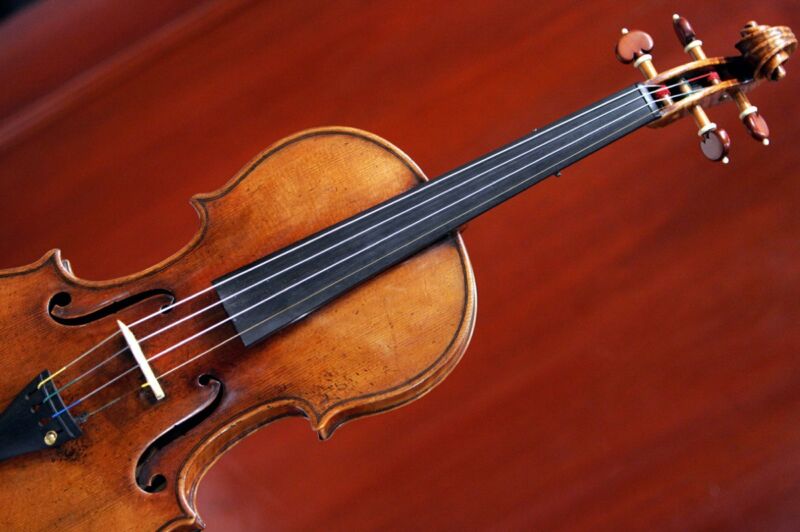
Musicians and music lovers have long enjoyed the rich sound quality of the violins that Antonio Stradivari created, especially at the beginning of the 18th century (the so-called “golden period”). Scientists are equally fascinated by why Stradivari violins seem to sound so much better than modern instruments; it has been an active area of research for decades.
A recent paper published in the journal Analytical Chemistry reported that nanoscale imaging of two such instruments revealed a protein-based layer at the interface of the wood and the varnish, which can influence the natural resonance of the wood and thus the resulting sound. Meanwhile, another paper published in the Journal of the Acoustical Society of America showed that the better resonance of older violins produces stronger combination tones, which can also affect the perception of musical tones.
I’ve written extensively on this topic in the past, and here’s a helpful summary of some of the research in this area to date. According to my 2021 article, the (perceived) unique sound cannot be due to the geometry of the instrument alone, although Stradivari’s geometric approach gave us the violin’s signature shape. One hypothesis is that Stradivari may have used alpine spruce that grew during a period of unusually cold weather, causing the growth rings to move closer together, causing the wood to become abnormally dense. Another popular theory has to do with the varnish: namely that Stradivari used an ingenious cocktail of honey, proteins and gum arabic from sub-Saharan trees — or perhaps salts or other chemicals.
It is the paint that has received the most attention in recent years. The theory dates back to 2006 when Joseph Nagyvary, professor emeritus of biochemistry at Texas A&M University, made headlines with a Nature article claiming that the chemicals used to treat the wood — not necessarily the wood itself — were responsible for the unique sound of a Stradivarius violin.
They were mainly salts of copper, iron and chromium, all of which are excellent wood preservatives, but may have also altered the acoustic properties of the instruments. He based his findings on studies using infrared and nuclear magnetic resonance spectroscopy to study the chemical properties of the boards of various violins (the board is the largest resonant component of the instrument).
More evidence for Team Varnish came from a 2016 study by researchers at the Swiss Federal Laboratories for Materials Science and Technology (EMPA). They studied how the chemical composition, thickness and degree of penetration of a varnish into the wood affected the acoustics of the instrument. The researchers found that all varnishes increased the damping ability of the wood, that is, how well it absorbs and stops vibrations, bringing out a warmer, softer and aesthetically pleasing sound. A 2017 study by Taiwanese researchers compared maple used by Stradivarius to modern, high-quality maple wood. Their analysis showed evidence of chemical treatments in the form of aluminum, calcium and copper, among others.
And last year, researchers analyzed trace chemicals preserved in the maple wood used to make the soundboards of Stradivari and Guarneri instruments. The study included a rare collection of Cremonese wood samples from spruce and maple used by Stradivari, Guarneri and Amati, and the results were then compared with modern spruce and maple woods, as well as woods from antique Chinese zithers and less exceptional old European violins. . They found traces of borax and various metal sulfates in the wood samples dating to between 1600 and 1750. “I believe chemically processed wood was the missing key that prevented us from reproducing Stradivari’s tone,” co-author Bruce Tai told Ars last year. .

